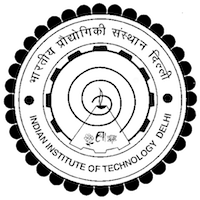In a short communication published in Zeitschrift fur Chemie, volume 12, pp 405-406, 1869, titled, “On the relationship of the properties to the atomic weights of the elements” Mendeleev announced a startling discovery that would revolutionize chemistry forever. The Periodic Table revealed a pervasive order in nature, one that always existed, but was hidden till Mendeleev expounded it [1].
In this presentation, we shall briefly trace the origins of the discovery with a retrospective view of what led Mendeleev to this epochal discovery [2]. We illustrate the conception of the Periodic Table as a classical Kuhnian scientific revolution; that is, a discovery made according to the paradigm of the scientific time period as a whole. To this end, we observe and analyze the greater trends in science during the era of Mendeleev and his immediate influences. Moreover, we address how the lexicon in the field of chemistry today allows for a broad interpretation of the current paradigm, and that this qualitative aspect of “the central science” enables for unique creative contributions. Finally, we investigate alternative historical models for the discovery of the Periodic Table, compare such models, and present an approach to scientific inquiry going forward in an era dominated by computational power and artificial intelligence.
The Periodic Table is a living and evolving construct of chemistry, which continues to inspire our thoughts and challenge our intellect. From the original 56 elements, today the Table has 118 elements and is getting prepared to accommodate the element 121, yet to be discovered, to begin the g-block. The Table has spurred the creativity of scientists in many unexpected ways. Seaborg created a separate row for f-block actinide and lanthanide elements, outside of Mendeleev’s Table merely for the convenience of accommodating the Table in an A4 size paper!
We will discuss the current debate between chemists and physicists on how best to represent the Table and also explore present day views on whether there is a limit to how far the Table may reach [3]. The fate of modern technology and, hence, humanity is deeply intertwined with the material resources of the world. In principle, apart from helium and uranium, elements are indestructible; yet strangely we are concerned with the sustainability of the elements in the Periodic Table. This is because we mine the elements from the earth and distribute them in small quantities in large number of devices and gadgets that we use every day that it is no longer economical to recover and purify them after their end-of-life use. Today as many as 44 elements of the Periodic Table are in the endangered category [4]. The burgeoning human population coupled with the insatiable desire for consumption may ultimately relegate the Table literally to the wall.
In this presentation, we shall briefly trace the origins of the discovery with a retrospective view of what led Mendeleev to this epochal discovery [2]. We illustrate the conception of the Periodic Table as a classical Kuhnian scientific revolution; that is, a discovery made according to the paradigm of the scientific time period as a whole. To this end, we observe and analyze the greater trends in science during the era of Mendeleev and his immediate influences. Moreover, we address how the lexicon in the field of chemistry today allows for a broad interpretation of the current paradigm, and that this qualitative aspect of “the central science” enables for unique creative contributions. Finally, we investigate alternative historical models for the discovery of the Periodic Table, compare such models, and present an approach to scientific inquiry going forward in an era dominated by computational power and artificial intelligence.
The Periodic Table is a living and evolving construct of chemistry, which continues to inspire our thoughts and challenge our intellect. From the original 56 elements, today the Table has 118 elements and is getting prepared to accommodate the element 121, yet to be discovered, to begin the g-block. The Table has spurred the creativity of scientists in many unexpected ways. Seaborg created a separate row for f-block actinide and lanthanide elements, outside of Mendeleev’s Table merely for the convenience of accommodating the Table in an A4 size paper!
We will discuss the current debate between chemists and physicists on how best to represent the Table and also explore present day views on whether there is a limit to how far the Table may reach [3]. The fate of modern technology and, hence, humanity is deeply intertwined with the material resources of the world. In principle, apart from helium and uranium, elements are indestructible; yet strangely we are concerned with the sustainability of the elements in the Periodic Table. This is because we mine the elements from the earth and distribute them in small quantities in large number of devices and gadgets that we use every day that it is no longer economical to recover and purify them after their end-of-life use. Today as many as 44 elements of the Periodic Table are in the endangered category [4]. The burgeoning human population coupled with the insatiable desire for consumption may ultimately relegate the Table literally to the wall.











